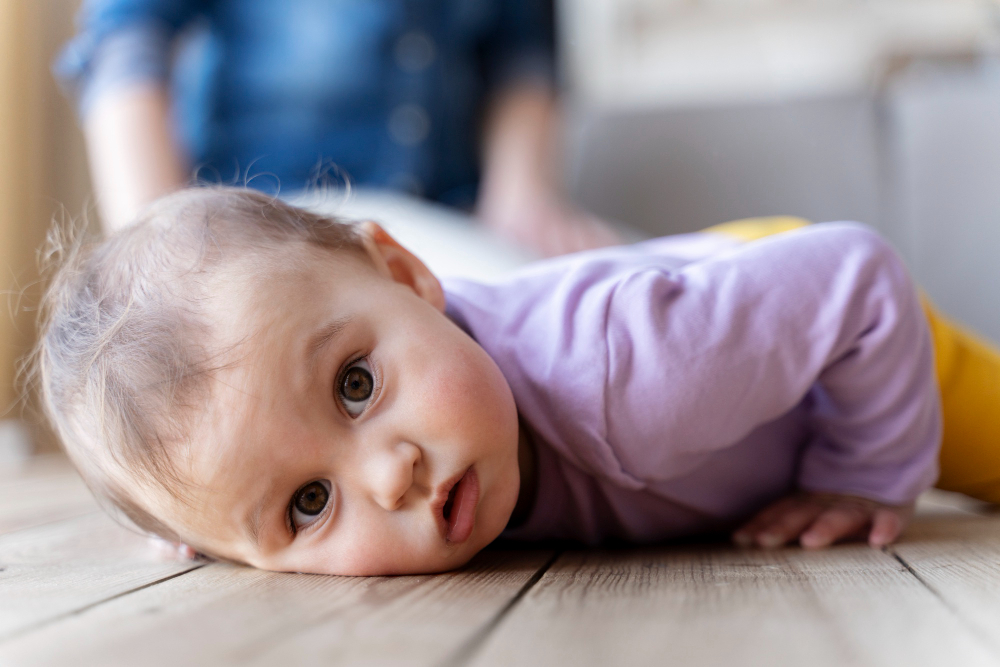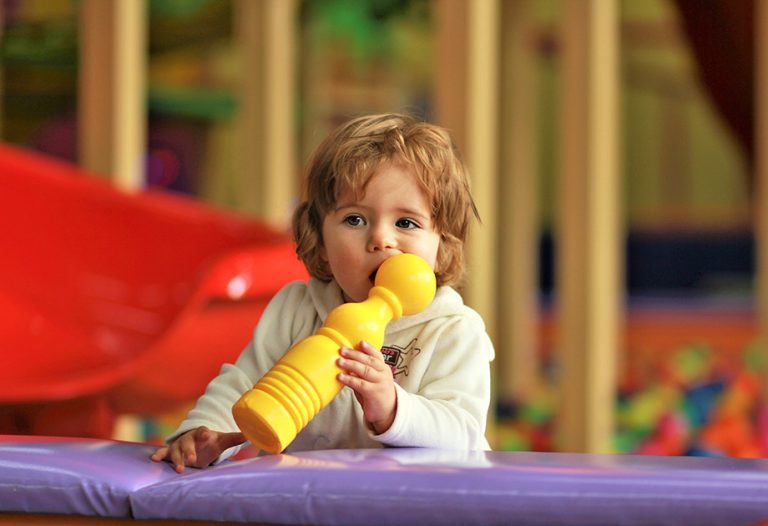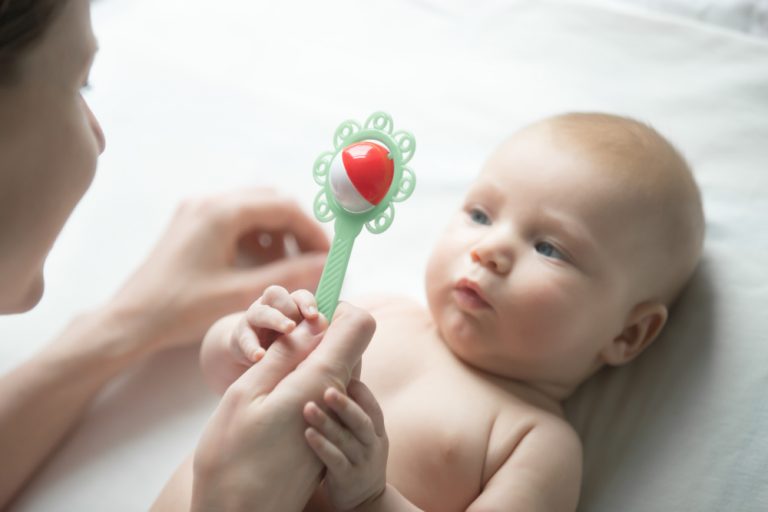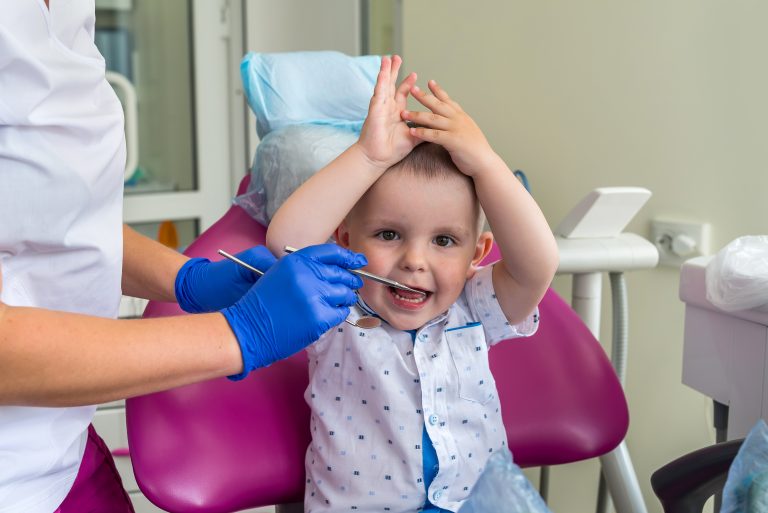What Age Do Babies Crawl? Baby Crawling And How To Help
Are you eagerly awaiting the moment when your little one takes those first crawls, signaling a significant development milestone in their growth journey?
Watching your baby explore the world from a newfound perspective is a thrilling experience, but the question on every parent’s mind is, “What age do babies crawl?”
This fundamental stage in infant development holds various implications for both their physical abilities and cognitive advancements.
As your baby transitions from bobbing on their belly during tummy time to engaging in adorable crawling motions, you might be curious about the different types of crawling styles they may adopt.
From classic crawls to bear crawls and even crab crawls, each reflects a unique stage in your baby’s journey toward mobility and independence.
In this insightful blog, we delve into the exciting world of what age do babies crawl, exploring the various aspects of this developmental phase. You’ll find valuable tips on encouraging your little mountaineer, understanding the signs that indicate they’re ready to crawl, and creating a safe environment that supports their exploration.
Don’t miss out on unlocking the secrets to nurturing your baby’s crawling abilities and celebrating their growth every step of the way.
Introduction to Crawling

Crawling is a significant milestone in a baby’s development that marks the transition from being immobile to gaining mobility. It is the first step towards exploring the world and developing gross motor skills. Crawling allows babies to strengthen their muscles, improve coordination, and develop spatial awareness.
- At around six to ten months of age, babies typically start crawling.
- However, it’s important to note that each child develops at their own pace, and some may start crawling earlier or a little later.
- Crawling plays a crucial role in a baby’s physical and cognitive development.
- It promotes balance, improves hand-eye coordination, and helps babies build strength in their arms, legs, and core.
Not only does crawling enhance motor skills, but it also encourages cognitive growth. As babies crawl, they engage with their environment, explore different textures, and develop a sense of spatial awareness. Crawling also lays the foundation for other important milestones, such as standing and walking.
Parents should celebrate their baby’s crawling milestone, which signifies their growing independence and ability to navigate the world around them.
Through gentle guidance and support, parents can provide a safe and nurturing environment that encourages their baby to explore, learn, and master the art of crawling.
What Age Do Babies Crawl?
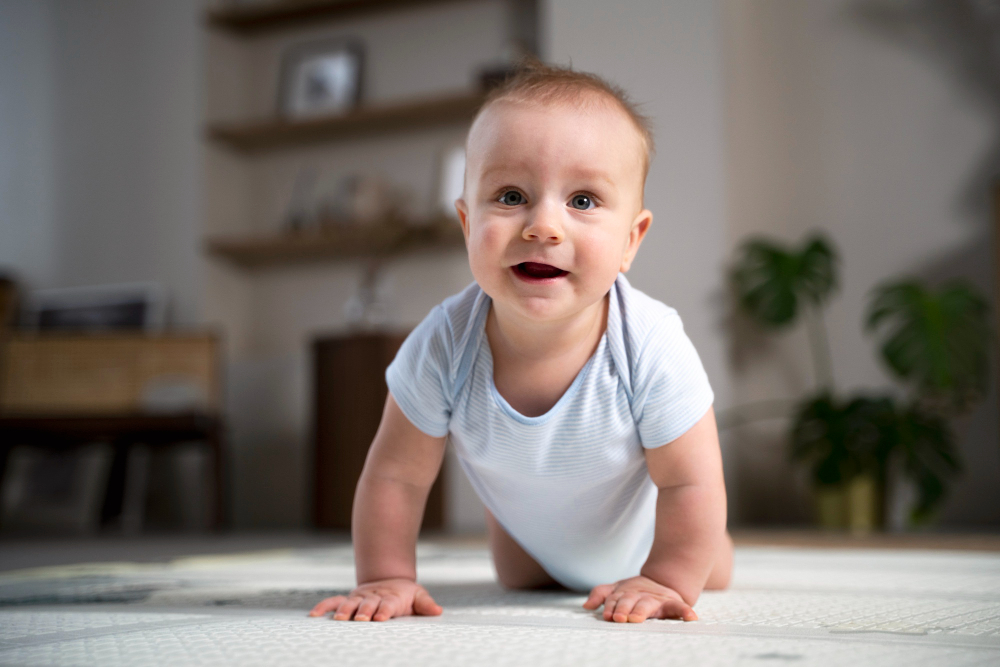
Crawling is an exciting milestone in a baby’s development and typically occurs between the ages of 6 to 10 months. However, it’s important to remember that each baby is unique and may reach this milestone at their own pace.
Some babies may start crawling as early as 6 months, while others may take a little longer and begin crawling closer to 10 months.
The age range for crawling can also vary due to various factors such as strength, coordination, and motivation. Babies who have spent ample time on their tummy during supervised play sessions, also known as tummy time, may develop their core muscles and coordination more quickly, leading to earlier crawling.
So, how can you tell if your baby is ready to start crawling? Look out for these signs:
1. Improved upper body strength
- As babies gain more control over their neck and torso muscles, they are better equipped to support themselves while crawling.
- You may notice your baby lifting their head and chest during tummy time.
2. Increased mobility
- The ability to roll over from back to tummy and vice versa is often a precursor to crawling.
- Rolling helps babies understand how to shift their weight and coordinate their movements.
3. Commando crawl
- Before mastering the traditional hands-and-knee crawl, babies may initially start with the commando crawl.
- This involves dragging themselves forward using their arms while keeping their lower body on the ground.
4. Crawling position
- Observe if your baby is getting into a crawling position on their hands and knees, rocking back and forth, or attempting to move forward.
- These are positive indications that crawling is just around the corner.
5. Increased curiosity and exploration
- Babies who are ready to crawl often show a greater inclination to explore their surroundings.
- They may reach out for objects, try to grab them, and show a desire to move towards them.
Remember, every baby develops at their own pace, so there’s no need to worry if your little one hasn’t started crawling by a certain age.
However, if your baby hasn’t shown any signs of crawling or mobility by the age of 12 months, it may be worth discussing with your pediatrician to rule out any underlying concerns.
Encourage your baby’s crawling development by providing a safe and stimulating environment that motivates movement. Clear obstacles, create an open space, and offer plenty of supervised tummy time. Remember, the journey to crawling is an exciting adventure for both you and your baby.
Different Types of Crawling Styles
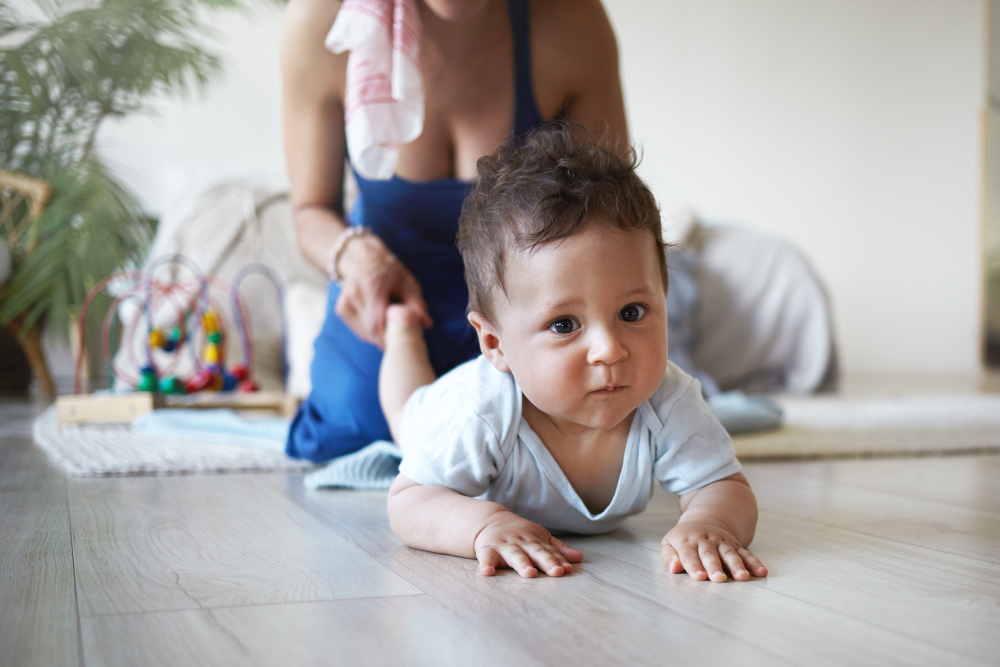
When babies undertake their crawling journey, they may demonstrate various styles as they explore their surroundings and build their mobility. Each crawling style has unique characteristics and can be an exciting milestone in your little one’s development.
Here are some common types of crawling styles you might observe:
1. Classic Crawl
The classic crawl involves babies moving on all fours, with their hands and knees supporting their weight. It’s characterized by alternating movements of the opposite arm and leg, allowing for efficient locomotion.
2. Belly Crawl
Some babies prefer to crawl by dragging their belly along the floor, using their arms and legs to propel themselves forward. This style allows them to explore their environment while developing their upper body strength.
3. Bear Crawl
Similar to the classic crawl, the bear crawl involves babies moving on all fours. However, instead of using their knees, they keep their legs straight, using their feet and hands to move, resembling a bear walking on its paws.
4. Rolling Crawl
Rather than relying solely on arm and leg movements, some babies opt for a rolling crawl. They roll their bodies from their back to their stomach or vice versa to navigate their surroundings.
5. Bottom Scoot Crawl
In this style, babies sit on their bottom and shuffle or scoot forward, using their hands for support and propulsion. It’s a unique and effective way for them to explore while honing their fine motor skills.
6. Crab Crawl
The crab crawl is characterized by babies moving sideways, using their hands and feet to scuttle across the floor. This style helps develop coordination and encourages exploration from a different direction.
Encouraging and celebrating your baby’s chosen crawling style is essential. Remember that every little one develops at their own pace, so assume their individual journey.
- Providing a safe environment and ample opportunities for exploration and play will support their crawling development.
- Look for potential hazards, such as sharp edges or unsafe surfaces, and adjust accordingly.
Understanding the different crawling styles can help you better appreciate and assist your baby as they navigate this exciting phase of their development. Stay tuned for more tips on how to encourage crawling and ensure your baby’s safety in our upcoming sections.
6 Working Tips to Encourage Crawling

As your baby undertakes their crawling journey, there are several strategies you can employ to encourage and support their development.
Here are 6 valuable tips and tricks for parents:
1. Place toys up high temporarily
- One effective way to motivate your baby to crawl is by temporarily placing their favorite toys just out of reach.
- This encourages them to use their newly acquired mobility to move toward the desired object.
- Ensure that the toys are placed safely out of reach on a stable surface.
2. Offer physical support
- Assist your baby by offering physical support during their crawling attempts.
- Place your hands lightly behind their feet and gently guide them forward.
- This provides them with a sense of security and helps build confidence in their crawling abilities.
3. Do push-ups together
- Engage in playful activities that strengthen your baby’s upper body muscles, a crucial element for successful crawling.
- Encourage mini push-up exercises by placing your hands firmly on their feet while they lie on their tummy.
- Gently lift their legs, mimicking a push-up motion.
- This not only helps develop their strength but also improves their coordination.
4. Rock to music
- Create an engaging crawling environment by incorporating music into your baby’s playtime.
- Choose lively tunes and gently rock them back and forth while they are in the crawling position.
- The rhythmic movements combined with the music can motivate and stimulate their crawling efforts.
5. Crawling towards a favorite toy
- Place your baby’s favorite toys just out of reach to harness their natural curiosity and desire to reach them.
- By strategically positioning a beloved toy a short distance away, you can encourage them to crawl towards it, fostering their motivation and determination.
6. Dressing for the occasion
- Consider your baby’s comfort and freedom of movement when selecting their attire.
- Opt for loose-fitting clothing that allows unrestricted crawling motions.
- Avoid dressing them in bulky or constricting outfits that may hinder their mobility and discourage crawling.
Remember, each baby reaches developmental milestones at their own pace. Be patient and supportive while providing opportunities for them to explore and strengthen their crawling abilities. By implementing these tips, you can create an engaging and supportive environment that helps your baby thrive in their crawling journey.
Keeping Your Crawler Safe
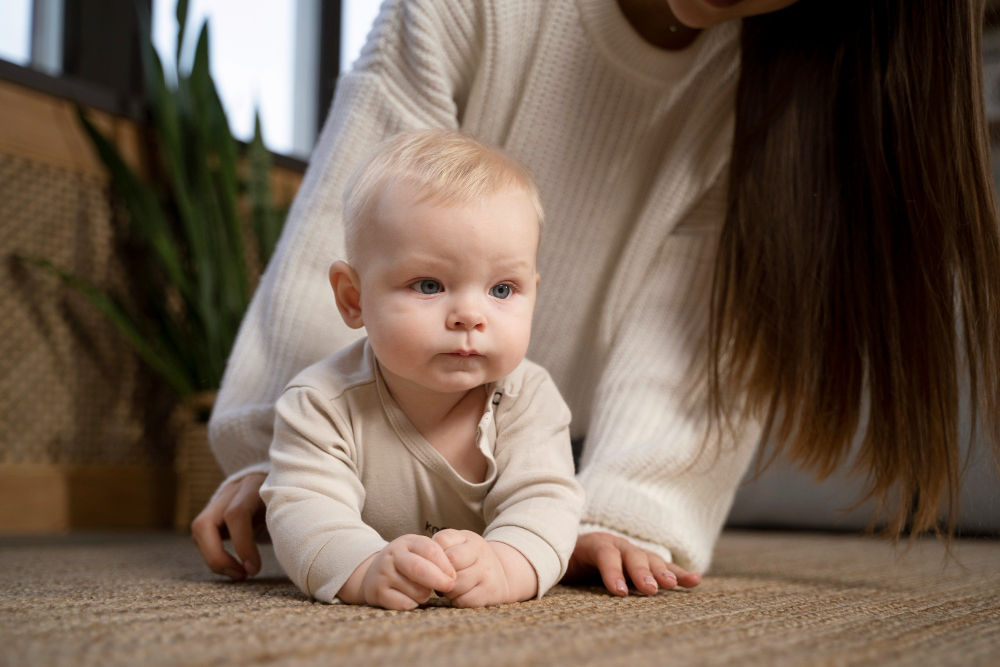
As your little one ventures on their crawling journey, it’s crucial to create a safe environment that allows them to explore and learn without unnecessary hazards.
Here are some essential safety tips to ensure your crawling baby’s well-being:
Babyproof the Surroundings
- Install safety gates at stairways and block off areas that may pose risks.
- Secure cabinets and drawers with childproof locks to prevent access to harmful substances or objects.
- Cover electrical outlets using outlet covers to prevent electrical shock.
- Keep small objects, choking hazards, and cords out of reach.
Supervise Constantly
- Never leave your baby unattended while they are crawling.
- Keep an eye out for potential dangers, such as sharp edges, breakable items, or hot surfaces.
- Ensure that the crawling area is free from harmful substances or any other hazards that may cause injury or illness.
Create a Safe Play Zone
- Designate a safe space for your baby to crawl.
- Use a playpen or baby gate to limit their exploration to a controlled area.
- Remove any dangerous or fragile items from the crawling zone.
- Place soft mats or rugs on hard surfaces to provide a comfortable and cushioned area for crawling.
Identify and Address Potential Hazards
- Secure heavy furniture, such as bookshelves or dressers, to the wall to prevent them from tipping over.
- Cover sharp corners and edges with corner guards or cushions to prevent injuries.
- Keep window cords out of reach or use cordless blinds to eliminate the risk of strangulation.
- Check the floor for small items, such as coins, buttons, or small toys that may pose a choking hazard.
Beware of Elevated Surfaces
- Ensure that your baby cannot crawl onto elevated surfaces, such as beds, sofas, or tables, where they may fall and injure themselves.
- Use safety barriers or guards to prevent access to stairs or raised platforms.
Remember, creating a safe environment is essential, but it’s equally important to teach your baby about boundaries and gently redirect them if they stray toward potentially dangerous areas.
By following these safety measures, you can promote your baby’s exploration while ensuring their well-being during this exciting milestone.
When to Worry About Baby Not Crawling

As parents, it’s natural to wonder when your little one will start crawling. While there is a typical age range for crawling, it’s important to remember that every baby develops at their own pace. However, if your baby hasn’t started crawling within the expected timeframe, it’s natural to have some concerns.
- Typically, babies start crawling between 6 and 10 months, with some variations.
- However, if your baby hasn’t shown any interest in crawling or hasn’t made any attempts by 12 months, it may be worth discussing this with your pediatrician.
- Every child is unique, and some may skip crawling altogether and move straight to walking.
- However, if your baby has not reached other developmental milestones or shows any signs of delayed motor skills in addition to not crawling, it’s essential to seek professional advice.
Remember that babies develop in their own time, and there’s no need to panic. However, if you have concerns about your baby’s crawling development or overall motor skills, it’s always best to consult with your child’s healthcare provider. They can provide guidance, evaluate your baby’s development, and offer reassurance or support if needed.
Key Takeaways: What Age Do Babies Crawl?

To sum up, crawling is a significant milestone in a baby’s development. It not only strengthens their muscles and improves coordination but also enhances their cognitive and spatial awareness skills. Here are the key takeaways from this article:
1. Babies typically start crawling between 6 to 10 months of age, but this can vary. Some babies may start crawling as early as 5 months, while others may take longer.
2. Look for signs that indicate your baby is ready to crawl, such as pushing up on their hands and knees, rocking back and forth, and showing an eagerness to explore their surroundings.
3. Babies may adopt various crawling styles, including classic crawl, belly crawl, bear crawl, rolling crawl, bottom scoot crawl, and crab crawl. Every baby has a unique way of getting around!
4. To encourage your baby’s crawling development, you can temporarily place their favorite toys on elevated surfaces, offer physical support and gentle guidance, engage in fun activities like doing push-ups together or crawling to their favorite toys, play music to stimulate movement, and dress them comfortably for easy mobility.
5. Safety is crucial during the crawling stage. Babyproof your home by covering sharp edges, securing furniture, and ensuring a safe environment free from potential hazards.
6. While most babies follow the typical crawling timeline, it’s essential to remember that every child is different. If your baby hasn’t started crawling within the expected age range, consult their pediatrician for guidance and reassurance.
Remember to enjoy this exciting phase of your baby’s development and provide them with a supportive and stimulating environment as they navigate the world on all fours. Happy crawling!

